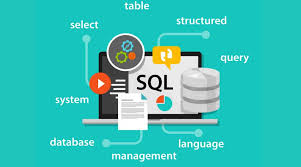Description
Introduction of Database & Relational DBMS
Database & Relational DBMS Training is a database is an organized collection of structured information or data, typically stored electronically in a computer system. Essentially, it enables efficient storage, retrieval, and management of data, which is vital for various applications, from small projects to large enterprise systems. Moreover, databases are managed using Database Management Systems (DBMS), providing tools for data manipulation and query execution. Additionally, with different types of databases available, such as relational and NoSQL, users can select the right system based on their specific needs. Consequently, understanding databases is crucial for anyone involved in software development, data analysis, and IT management, as it supports data-driven decision-making.
TABLE OF CONTENT
1 :Introduction to Databases
1.1 Definition and Importance
1.2 Evolution of Database Systems
1.3 Types of Databases
2 : Relational Database Management Systems (RDBMS)
2.1 Basics of Relational Databases
2.2 Tables, Rows, and Columns
2.3 Keys and Relationships
3 : Database Design
3.1 Conceptual Design
3.2 Logical Design
3.3 Physical Design
3.4 Normalization
4 : SQL (Structured Query Language)
4.1 Basic SQL Commands
4.2 Data Definition Language (DDL)
4.3 Data Manipulation Language (DML)
5 : Database Modeling
5.1 Entity-Relationship (ER) Model
5.2 UML Diagrams for Databases
6 : Indexing and Query Optimization
6.1 Importance of Indexing
6.2 Query Optimization Techniques
7 : Transactions and Concurrency Control
7.1 ACID Properties
7.2 Transaction Management
7.3 Concurrency Control Techniques
8 : Database Security
8.1 Authentication and Authorization
8.2 Encryption and Auditing
9 : NoSQL Databases
9.1 Introduction to NoSQL
9.2 Types of NoSQL Databases
9.3 Use Cases for NoSQL
10 : Distributed Databases
10.1 Basics of Distributed Databases
10.2 Distributed Database Architecture
10.3 Replication and Sharding
11 : Big Data and Database Systems
11.1 Introduction to Big Data
11.2 Challenges and Solutions
12 : Data Warehousing
12.1 Data Warehousing Concepts (Ref: Data Warehouse Development)
12.2 ETL (Extract, Transform, Load) Processes
13 : Database Administration
13.1 Roles and Responsibilities
13.2 Backup and Recovery
14 : Emerging Trends in Database Systems
14.1 Cloud Databases
14.2 Blockchain and Databases
Conclusion
Understanding databases and relational DBMS is crucial for efficient data management and retrieval. These systems provide a structured way to store and manipulate data, ensuring integrity and accessibility. Mastery of these concepts empowers Database Administrators to optimize performance and maintain robust database environments.







Reviews
There are no reviews yet.